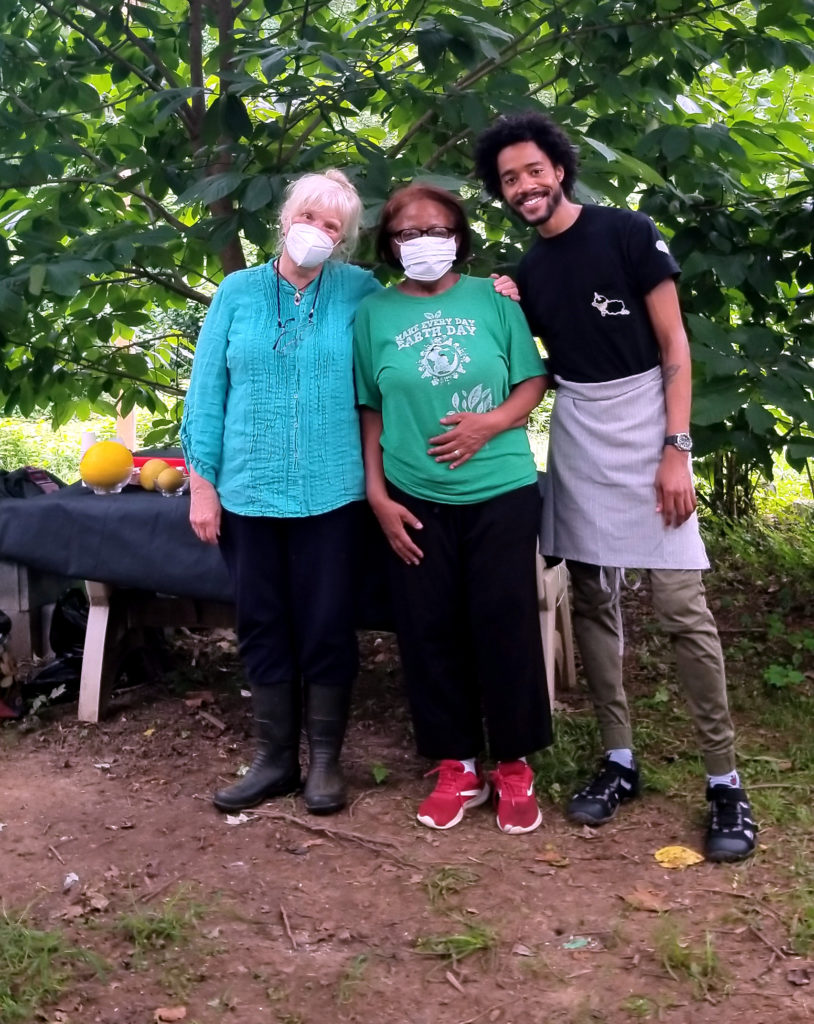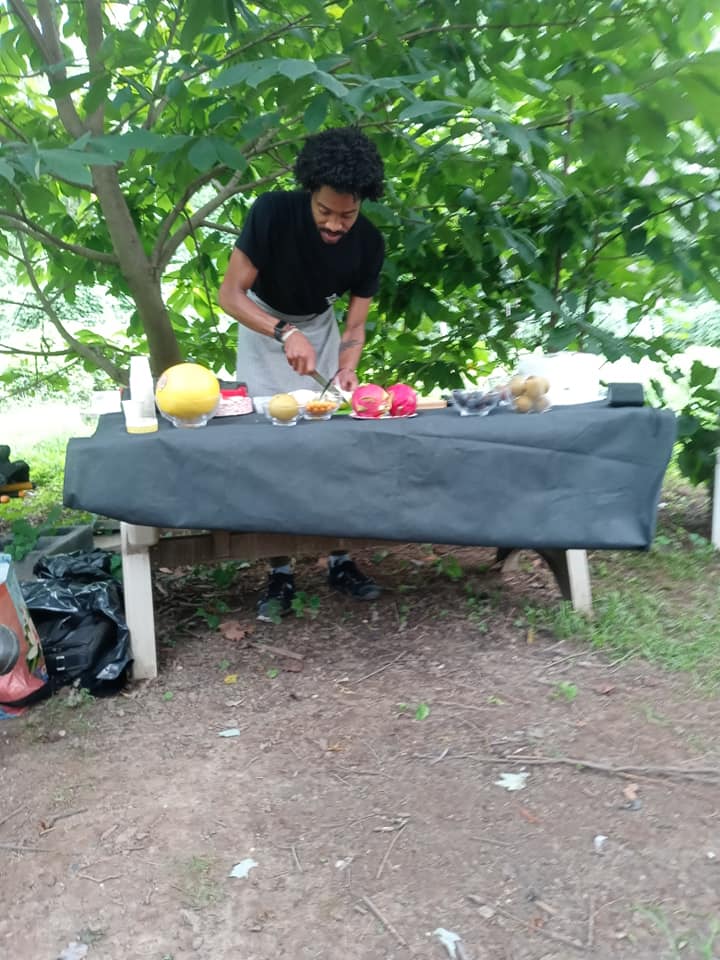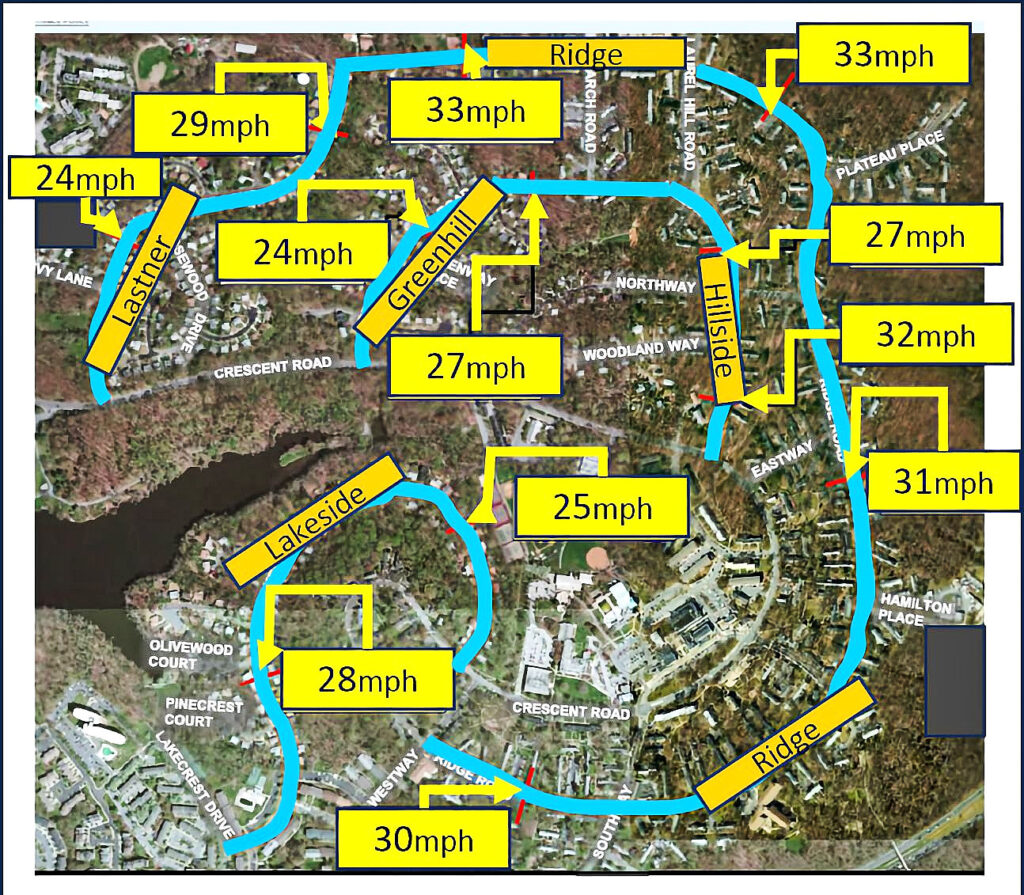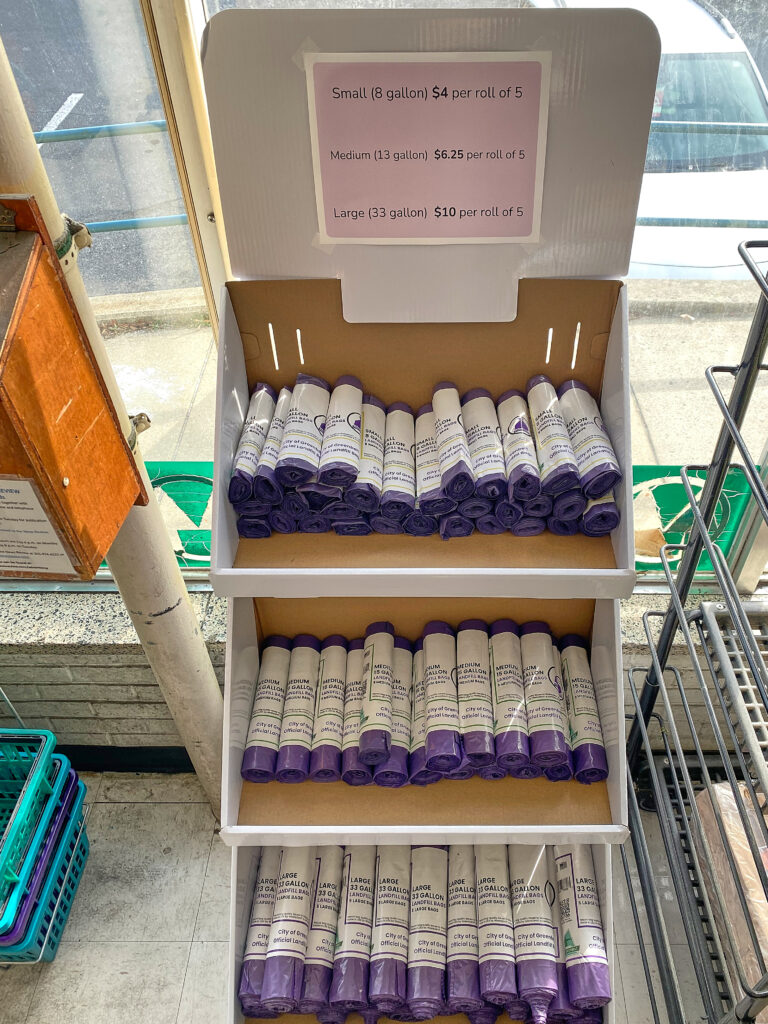Under the broad shady leaves of a pawpaw tree, Shaymar Higgs led a healthy food program near Springhill Lake Recreation Center, hosted by CHEARS (Chesapeake Education, Arts and Research Society). Founder and director of The Space Free Art for All, located at Beltway Plaza, Higgs shared a table laden with strange and exotic looking fruits. Among the crowd were CHEARS stalwarts Bob and Maggie Cahalan, along with Carolyn Lambright-Davis, convener.
Higgs brought several fruits from Asia including the lychee and the Asian pear. Asian pears – round, crunchy fruit – are a great alternative to an apple with a lot less sugar, according to Higgs. To eat the lychee, one must pinch off the leathery skin and nibble the grape-like fruit from around a large seed. Lambright-Davis collected the seeds so that her Earth Squad kids could try growing plants from them.
The crowd described many of the fruits Higgs offered as juicy and refreshing. He offered two large dragon fruits (pitaya or pitahaya), one with red flesh and one with white. The red fruit was deemed sweeter, the white fruit muskier. These fruits grow on a cactus similar to prickly pear. Higgs, who studied cooking and worked in fine dining, recommended blending dragon fruit with coconut, mango or passionfruit, advising cooks to “use a spoon to scoop it out because the skin is bitter.”
When he lived in Florida, Higgs was able to grow bananas, sand apples (a type of pawpaw), mangos, starfruit and coconut. “The starfruit should be orange,” he said. “You peel the fins off and pop out the seeds.”
The crowd also enjoyed golden kiwi, golden honeydew and golden berries. Related to a tomatillo, the golden berry is a small round orange fruit that grows inside a fine papery husk on a cucumber-like vine close to the ground. Also called a “ground cherry” or “husk cherry,” it thrives locally and has a musky, cantaloupe flavor.
Delicious fresh figs were also shared. Fig trees are growing at each of Greenbelt’s Three Sisters Demonstration Gardens, located at the Community Center, Schrom Hills Park and, of course, Franklin Park. Maggie Cahalan noted, “The Community Center tree is loaded with figs.” She explained, “The metaphor of the Three Sisters (corn, beans and squash) was chosen because each of these plants contributes something different, but when planted together they are stronger – hence the three neighborhoods of Greenbelt each are different but when together as community the whole is stronger.” The goal is to demonstrate permaculture, organic land care and provide a space for uniting the center, east and west areas of Greenbelt.
Although the pawpaws growing in the grove were not yet ripe, Bob Cahalan pointed out that “you can pick it before it’s ripe, and ripen it inside a paper bag with a banana.” The pawpaw trees were able to withstand flooding that damaged other plantings in the Food Forest. Pawpaws are North America’s largest native fruit. Nearby native persimmon trees have not yet begun to produce fruit.
After the tastings, volunteers helped pull porcelain berry vines off the American cranberry bushes. Porcelain berry vines are related to grapes, with similar leaves, but the berries are a shocking robin’s egg blue and are not good to eat. Volunteers who would like to help with planting and maintaining the Food Forest should email maggie@chears.org to find out how to help, or lambrightdavis@yahoo.com specifically to help at Franklin Park.
Many plants are successfully flourishing in the Food Forest, initially planned in 2013-14, including pawpaws, American cranberry, fig, bush cherries, linden, blackberries, bayberry, ostrich fern, persimmon, Nanking cherry, Joel bush cherry, blueberry and raspberries. This fall, CHEARS will schedule workdays to replant some varieties that were lost due to soggy conditions (for example, hazelnuts), to be replaced by hardier varieties for those conditions, possibly fox grapes, as well as thornless blackberries, persimmons, elderberries, gooseberries, chestnuts and additional Nanking cherry. “We have a lot of trees and shrubs from our seed project,” Maggie Cahalan said. The Three Sisters Gardens and Food Forest are meant to be demonstration projects, but anyone can pick the food, or it can be eaten by animals. “Two hazelnut trees that CHEARS planted in Schrom Hills are now producing hazelnuts,” she said.
CHEARS also announced the availability of fall cover crop seeds (radish, clover, buckwheat, rye and milkweed) and edible tree and shrub seedlings including pawpaw, persimmon, elderberry, gooseberry, blackberry, Chinese chestnut, bristly locust and black cherry.





